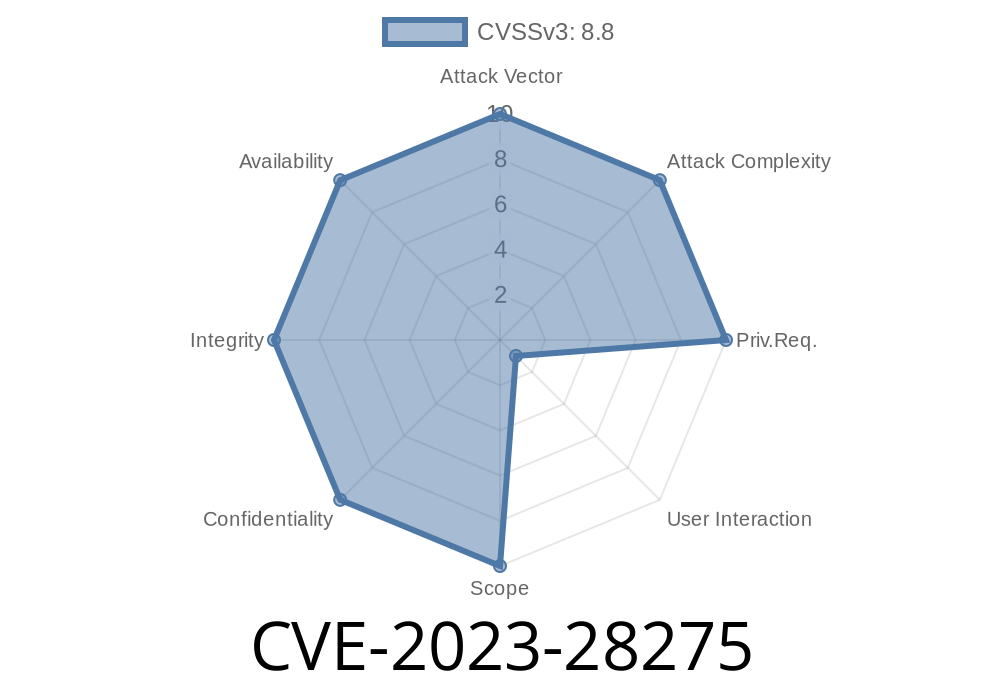In the world of cybersecurity, being proactive is key to staying ahead of the curve. That's why today, we're focusing on a newly discovered vulnerability: CVE-2023-28275 - Microsoft WDAC OLE DB Provider for SQL Server Remote Code Execution Vulnerability. This particular vulnerability poses a significant threat to those using Microsoft SQL Server as it allows attackers to execute malicious code remotely on affected servers.
In this long read post, we will dive deep into this critical vulnerability and explore the details of the exploit, complete with code snippets and helpful references. We will also discuss effective mitigation techniques. So, let's begin!
What is CVE-2023-28275?
CVE-2023-28275 is a security vulnerability that affects Microsoft's Windows Data Access Components (WDAC), specifically the OLE DB provider for SQL Server. The vulnerability has a severity rating of 9.8 out of 10, making it critical.
The OLE DB provider for Microsoft SQL Server allows applications to access data from SQL Server databases. It is an integral part of WDAC, which provides a uniform framework for accessing various types of data sources and databases.
The vulnerability could allow an attacker to execute arbitrary code remotely on a target server, which is running a vulnerable version of the WDAC OLE DB provider for SQL Server. This is due to insufficient validation of user input when handling queries sent to the SQL Server via the OLE DB provider.
Exploit Details
The exploit occurs when an attacker sends a specially crafted SQL query to a target server running the vulnerable OLE DB provider. The query exploits a vulnerability in the handling of user input, allowing the attacker to execute arbitrary code remotely on the target server.
For example, consider the following SQL query
SELECT * FROM vulnerable_table WHERE vulnerable_column = '; EXEC xp_cmdshell 'payload'
The xp_cmdshell is a built-in SQL Server function that allows for the execution of arbitrary operating system commands. In this case, 'payload' represents the malicious code that the attacker wishes to execute on the server.
Due to the lack of proper input validation, the SQL Server running the vulnerable OLE DB provider will execute the malicious code contained within the query, resulting in remote code execution.
Timeline
Published on: 04/11/2023 21:15:00 UTC
Last modified on: 04/13/2023 01:09:00 UTC
